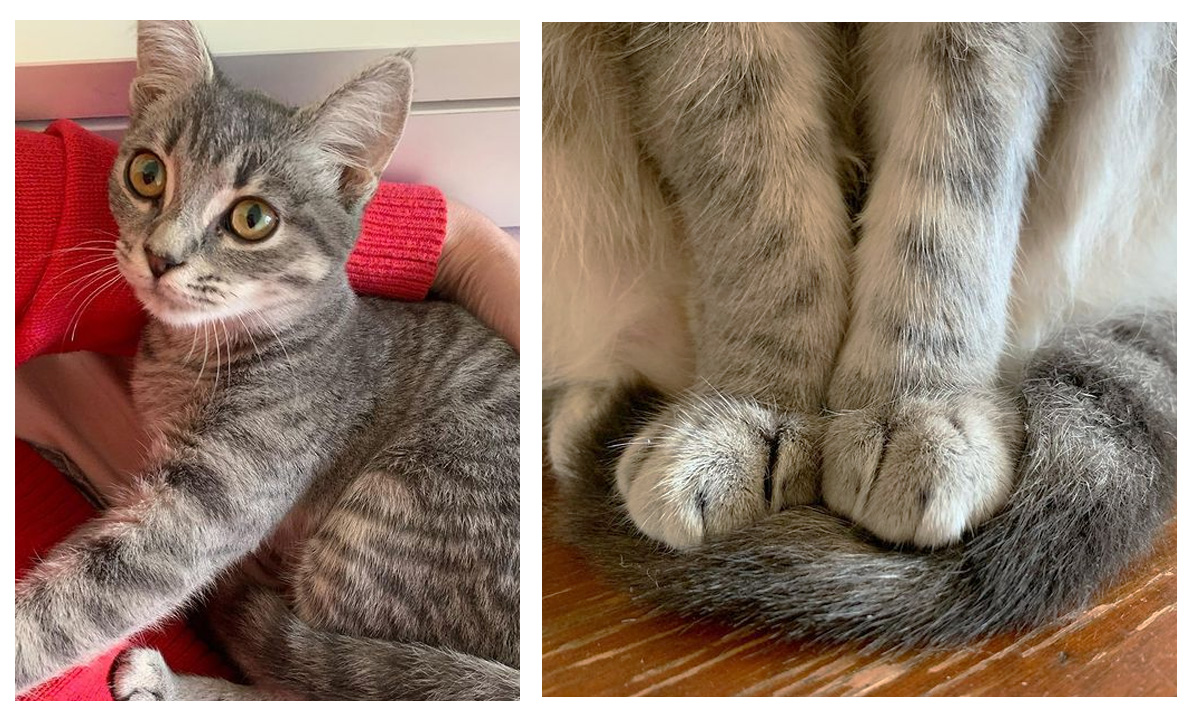Welcome, fellow cat lovers! Are you fascinated by the allure of grey tabbies? Whether you’re casually exploring or contemplating adoption, you’ve landed in the right spot. Our comprehensive guide unveils the captivating world of these adorable fur-balls, delving into their origins, distinctive appearance, and unique personality traits. We’ll also help you determine if a grey tabby is the perfect match for your lifestyle.
Before we dive in, let’s clarify: a grey tabby isn’t a specific breed; it’s a color and pattern combination found in various cat types, from Domestic Shorthairs to Scottish Folds. Curious about the tabby pattern? It’s a mesmerizing blend of spots, lines, stripes, and whirls on a kitty’s coat—a feature shared by numerous cat breeds. Get ready to unravel the charm of these delightful creatures!
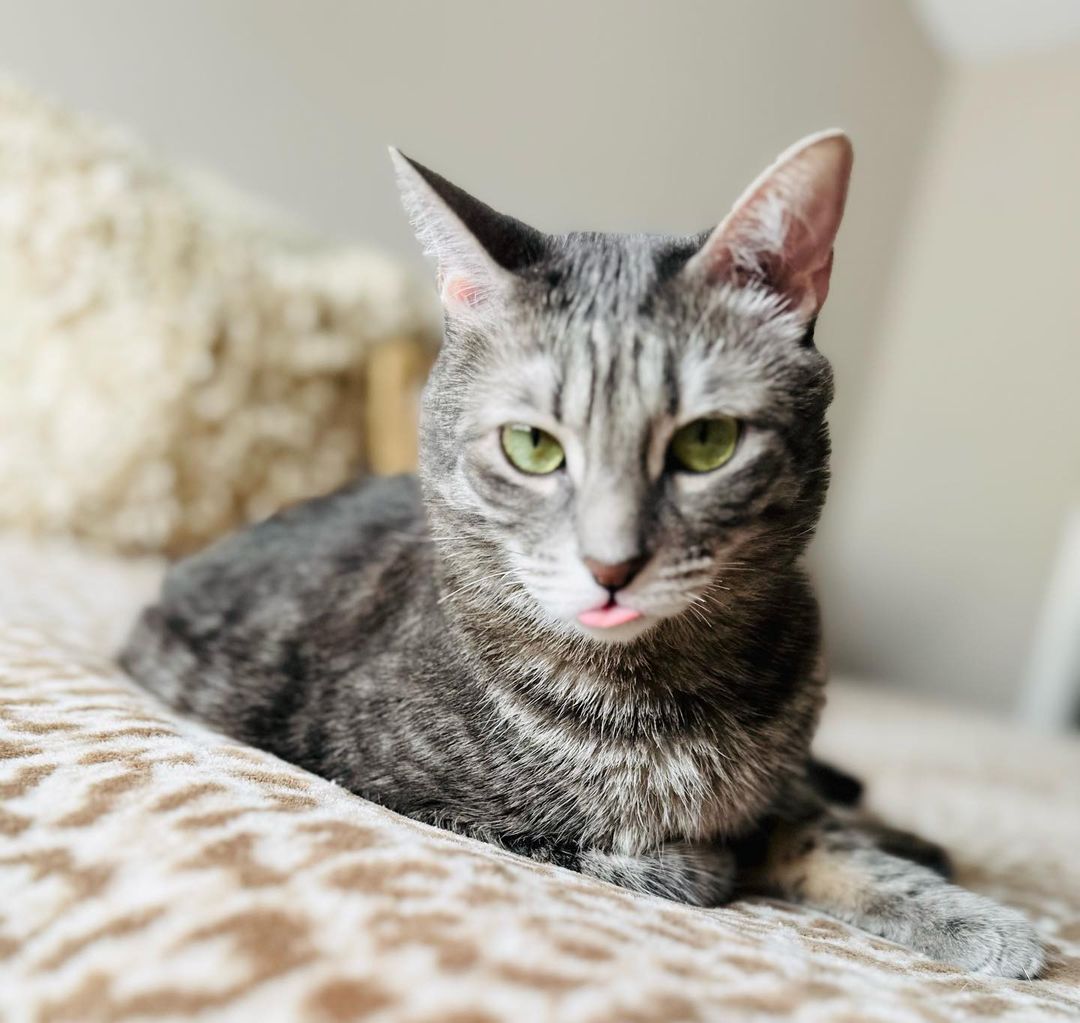
Unveiling the Enchanting Color Palette of Grey Tabby Cats?
It’s important to note that the grey tabby pattern is a common sight amongst shorthaired cats, but it isn’t exclusive to them. This mesmerizing design also shows up in purebred cats with luxurious, flowing coats.
Each breed carrying the grey tabby pattern boasts a unique look and size, adding to their allure and individuality. When we say “grey tabby,” we’re essentially referring to a cat whose coat displays a distinctive grey hue.
Grey tabby cats boast a stunning variety of coat patterns, from crisp lines to playful spots and sleek stripes to captivating swirls.
Each one is a walking piece of feline art! Unlike orange tabby cats, the grey tabby pattern is not gender-specific, appearing in both males and females. Curious about their origin? Let’s embark on a fascinating journey into the genetics of these charming creatures!

Unraveling the Genetic Tapestry of Grey Tabby Cats: A Deeper Dive
Our fascination with tabby patterns finds its origins in the lineages of the African Wildcat, the closest wild predecessor of our domestic kitties. If you get a chance to study an African Wildcat closely, you’ll observe a similar tabby pattern on its coat—a telling clue that this particular genetic trait has been inherited by our modern, much-loved tabby cats.
Having acknowledged the roots of the grey tabby cat, let’s now unravel the genetics that lay behind the enchanting tabby pattern.
Science reveals the agouti gene’s crucial role in creating the mesmerizing tabby pattern, a dominant trait found across various cat breeds.
Tabby cats, with their unique charm, showcase an array of colors, from pale grey to red, white, beige, and even brown with a hint of green.
Each tabby, including my own feline friend, is a genetic masterpiece, highlighting the delightful unpredictability of the feline world.

Assessing the Health of Grey Tabby Cats
Discover the keys to maintaining the health and happiness of your beloved grey tabby cat. Despite their overall resilience, grey tabbies, like all cats, require attentive care. Ensure their well-being with a nutritious diet, ample playtime, and regular vet check-ups.
As a responsible grey tabby cat owner, stay informed about potential health issues that may affect your feline companion:
- Urinary Problems: From bladder stones to infections, early detection through vet check-ups is vital.
- Conjunctivitis: Keep an eye out for inflammation and discomfort, easily treatable with medication.
- Kidney Failure: Regular blood and urine tests can identify early signs, addressing age or genetic factors.
- Diabetes: Watch for symptoms, especially in overweight cats, and consider a low-carb diet.
- Worms: Prevent parasitic issues with routine deworming treatments.
- Obesity: Manage portions and encourage exercise to avoid weight-related health problems.
While this may seem like a lot to handle, proactive care, regular vet visits, and affectionate attention can pave the way for your grey tabby to enjoy a long, healthy life. Stay aware, stay vigilant, and cherish every moment with your furry friend. Because when it comes to your cat’s health, prevention is truly the best medicine!
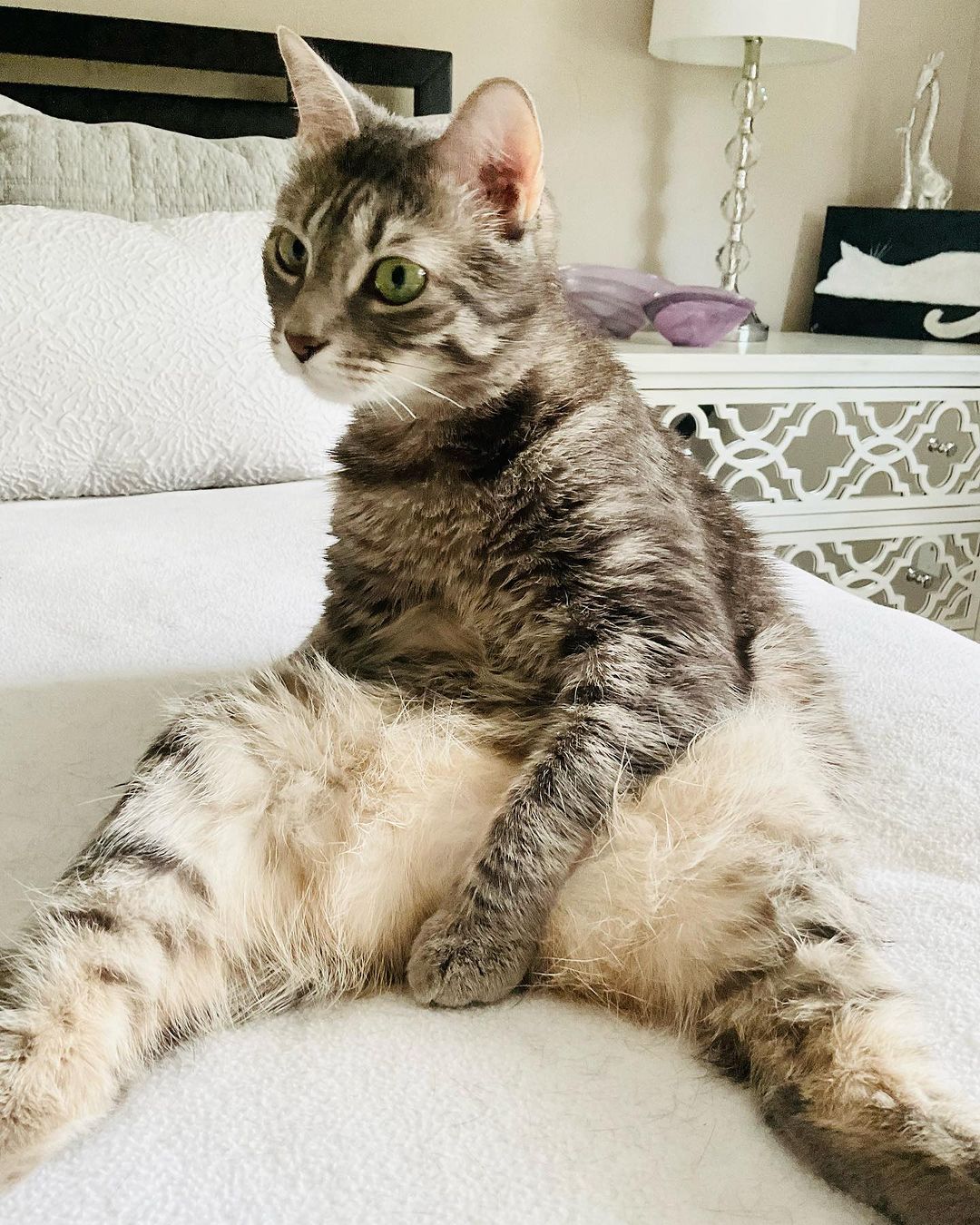
Unraveling the Temperament of the Grey Tabby Cat
Just as we’ve reiterated earlier, the grey tabby cat isn’t a breed—it’s a color and pattern type. With that in mind, you may be wondering how we can outline the disposition of such a feline? Well, let’s delve into that.
A tabby’s temperament is influenced by a multitude of factors. Breed, of course, plays a significant role, but how you interact with your cat and the environment they’re raised in are equally as pivotal. On the whole, cats are renowned for their independence and intellectual prowess, but they can also exhibit a certain level of uncertainty or wariness.
Unlike dogs, where specific breed traits often give a reliable indicator of behavior, the world of cats is a bit less predictable. You might find some tabbies that are fond of cuddles and walks on a leash, while others might prefer the solitary joys of climbing and observing their human companions from a comfortable distance.
Regardless of their individual quirks, cats, in general, are a great choice for a bustling family household or a single person leading an active lifestyle with frequent periods away from home.
If your dream is to have a cat that loves to curl up on your lap for some quality cuddle time, you’ll want to take a peek at our guide on raising a cuddly kitten.
One thing you can generally bank on with your grey tabby is their independent spirit. They’ll have no trouble amusing themselves while you’re out of the house. Whether they’re finding intriguing new spots to explore or simply lounging around, they’re capable of self-stimulating, both mentally and physically.
Remember, each cat comes with their unique traits—like scratching and a love for high places that offer a vantage point to survey their surroundings.
These behaviors give them a sense of control over their environment, promoting feelings of safety and security. So, to keep your furniture intact and provide your feline friend with their own personal play zone, consider investing in scratching posts and cat trees.
These will offer them plenty of opportunities to hide, play, and exercise their claws to their heart’s content. Plus, it will give your cat the vertical spaces they crave for observing their kingdom. This small investment goes a long way in keeping your cat healthy, happy, and content!
Exploring the Exercise Needs of the Grey Tabby Cat
A prevalent issue many domestic cats face, including grey tabbies, is the risk of diabetes and obesity. This is why animal health experts strongly suggest providing these felines with a nutritious diet and ample opportunities for physical activity. The more cat trees to scramble up, shelves to leap onto, and enticing games to partake in, the better for their overall health.
While cats aren’t as reliant on regular physical stimulation as dogs, it’s still important for them to engage in daily exercise to maintain a healthy weight and prevent obesity. It’s easy to think of cats as laid-back, lazy creatures—and while they do love a good snooze—they also need their fair share of active playtime.
The good news is, your cat won’t need a rigorous workout regime to keep in shape. Simply chasing after toys, scrambling up cat trees, or scratching at posts can all count as great forms of exercise. Not only do these activities help keep your cat physically fit, but they also offer mental stimulation.
In essence, the key to a healthy, happy cat lies in balancing a nutritious diet with regular play and activity. Consider introducing various toys and interactive games into your cat’s routine.
This will keep them engaged, agile, and help prevent health issues associated with a sedentary lifestyle. Plus, playing with your cat is a great bonding opportunity and can be a lot of fun—for both of you!
Remember, an active cat is a happy cat. So let your grey tabby unleash their inner wildcat, and have a great time doing it!

Understanding the Grooming Needs of the Grey Tabby Cat
Grooming your grey tabby cat can actually be one of the simpler aspects of pet ownership. This is largely because cats are natural groomers, spending a significant portion of their day meticulously cleaning and maintaining their coat.
However, if you’ve noticed that your feline friend seems to shed a lot, don’t be alarmed. Shedding is a completely normal part of a cat’s life cycle. That being said, regular shedding does mean that your grey tabby will need a bit of help from you in the grooming department, particularly if they’re of the long-haired variety.
For grey tabbies with short coats, brushing once a week should suffice to keep their fur looking sleek and shiny. On the other hand, if your grey tabby has long hair, you’ll need to up the brushing frequency to at least thrice a week. This is crucial to prevent matting and keep their luxurious fur tangle-free.
Many cats find the brushing process enjoyable, especially when done with appropriate tools and a gentle touch. If you want your feline friend to embrace the grooming process, it’s best to start introducing brushing and grooming routines from a young age. Make it an enjoyable and bonding experience for both of you. This way, your cat will associate grooming with positive feelings and might even start looking forward to these grooming sessions!
By catering to your grey tabby cat’s grooming needs, you’re not just helping to keep their coat in top condition, but also promoting their overall well-being. Plus, it’s a fantastic opportunity for some quality one-on-one time with your furry friend!

Understanding Bathing Needs of the Grey Tabby Cat
Like most of their feline kin, grey tabby cats are not exactly water enthusiasts. Fortunately, cats don’t require frequent baths like dogs might, thanks to their self-grooming habits.
That said, if your grey tabby cat manages to get herself into a mess and becomes dirty, a bath will be unavoidable. But remember, the key to successful cat bathing is to approach the process with gentleness and patience.
When it comes to bathing, it’s important to use a high-quality cat shampoo. Such products are designed to preserve your cat’s natural skin oils, maintaining the health and sheen of their coat. Following the bath, be sure to thoroughly towel dry your furry friend. For long-haired grey tabby cats, you may consider using a blow dryer to get them completely dry, but always opt for the lowest heat setting to avoid any potential discomfort. Remember, though, only choose this method if your cat is comfortable with it.
On the topic of grooming, let’s touch on nail care. If you notice your cat’s nails are splitting, breaking, or becoming excessively sharp, it’s an indication that a nail trim is overdue. Regular trimming helps to maintain healthy claws and prevents potential problems related to overgrown nails.
And of course, don’t forget about the importance of a good scratching post. Not only does it save your furniture from potential damage, but it’s also beneficial for your grey tabby cat’s nails. Scratching posts aid in naturally filing down your cat’s claws and promoting overall paw health.
Remember, your grey tabby cat’s grooming and bathing needs are an important aspect of their overall health and wellbeing. With patience, consistency, and the right tools, you’ll have a well-groomed, happy, and healthy cat!

Unpacking the Cost of Grey Tabby Cats
If you’re contemplating adding a grey tabby cat to your family, one of the considerations is undoubtedly the cost. However, remember that the ‘grey tabby’ is not a breed itself; instead, it’s a description of a cat’s color and pattern. Therefore, the cost can vary significantly based on the breed of the cat and the source of adoption.
If you’re looking to acquire a cat from a breeder, the price can range widely depending on the specific breed. For a pedigreed breed, you could be looking at an average price anywhere from $300 to $1,200, or possibly even more. Factors such as the breed’s rarity, the reputation of the breeder, and the cat’s lineage can all play a role in determining the cost.
On the other hand, choosing to adopt a cat from a rescue organization is a more affordable and rewarding option. Rescue groups generally charge an adoption fee to help cover their operating costs. These fees typically range from $50 to $100, though they can vary. What’s more, rescue cats often come already spayed/neutered and vaccinated, which can save you a bundle in initial veterinary costs.
Beyond the initial cost of acquiring your grey tabby, remember to factor in the ongoing expenses associated with cat ownership.
These include costs for food, litter, routine veterinary care, vaccinations, and unexpected healthcare expenses. Also, if your cat doesn’t come with certain supplies like a litter box, food and water dishes, a scratching post, and toys, you’ll need to factor in the cost of these items as well.
By considering all these factors, you can get a more accurate picture of the true cost of owning a grey tabby cat. But rest assured, the joy, companionship, and unconditional love they bring to your home are truly priceless.
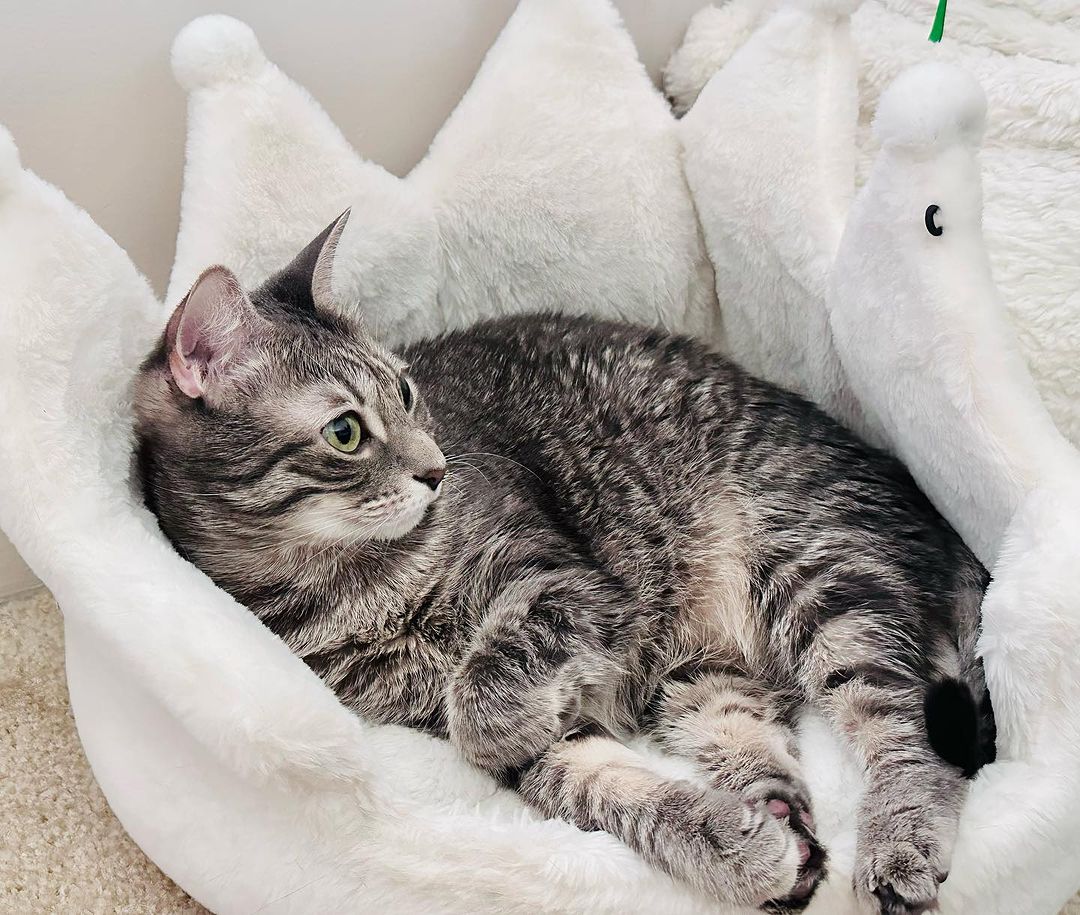
10 Interesting Facts About The Gray Tabby Cat
Origin of Tabby Pattern
The familiar mackerel pattern of the grey tabby cat, characterized by thin, parallel stripes, has its roots in the African Wildcat. It’s believed that domestic cats inherited this attractive feature from their wild ancestors. It’s fascinating to see how an adaptation for camouflage has become a cherished aesthetic trait in our beloved pet cats.
Dominant Gene
The tabby pattern, irrespective of color, is controlled by a dominant gene. This means that it’s more common for a cat to have a tabby pattern than not. It’s amazing how genetics work, making the captivating tabby pattern so widespread among felines!
Tabby is Not a Breed
Contrary to popular belief, ‘tabby’ is not a breed but refers to a cat’s coat pattern. This means any breed of cat can have a tabby pattern, whether it’s a Maine Coon, a Domestic Shorthair, or a Bengal. Understanding this fact underscores the diversity among cats and the fascinating variations in their coat patterns.
“M” Marking
One of the distinctive features of a tabby is the “M” shape on their forehead. There are many folk tales about the origin of this marking, with one suggesting it was a blessing from the Virgin Mary. It’s a delightful mystery that adds an extra layer of intrigue to these wonderful creatures.
Gender and Color
Contrary to the common misconception that all tabbies are male, grey tabby cats can be both male and female. However, in the case of orange tabbies, the majority are indeed male. This peculiar fact highlights the fascinating interplay between genetics and coat color.
Personality Traits
Though personality can vary based on breed and individual disposition, many grey tabby owners report their cats as being particularly affectionate, intelligent, and playful. These traits make grey tabby cats a delightful companion for families and individuals alike.
Versatility of the Grey Tabby
The grey tabby pattern can appear in both short-haired and long-haired breeds. This versatility allows for a wide range of appearances in grey tabby cats, adding to their charm and appeal.
Eye Color Variations
The eye color of grey tabbies can vary greatly, from mesmerizing green to deep gold, and occasionally blue. It’s incredible how this single breed can host such a broad spectrum of eye colors, each adding a unique touch to their appearance.
Unique Paw Pads
An interesting aspect of tabbies, including grey ones, is that their paw pads often match their coat color. This is a subtle but adorable feature that makes these cats even more endearing.
Health Aspects
Grey tabbies are generally robust and healthy. However, like any other cats, they can be susceptible to certain conditions such as obesity or urinary issues. Regular check-ups and a balanced diet help ensure these delightful felines stay in top-notch health.
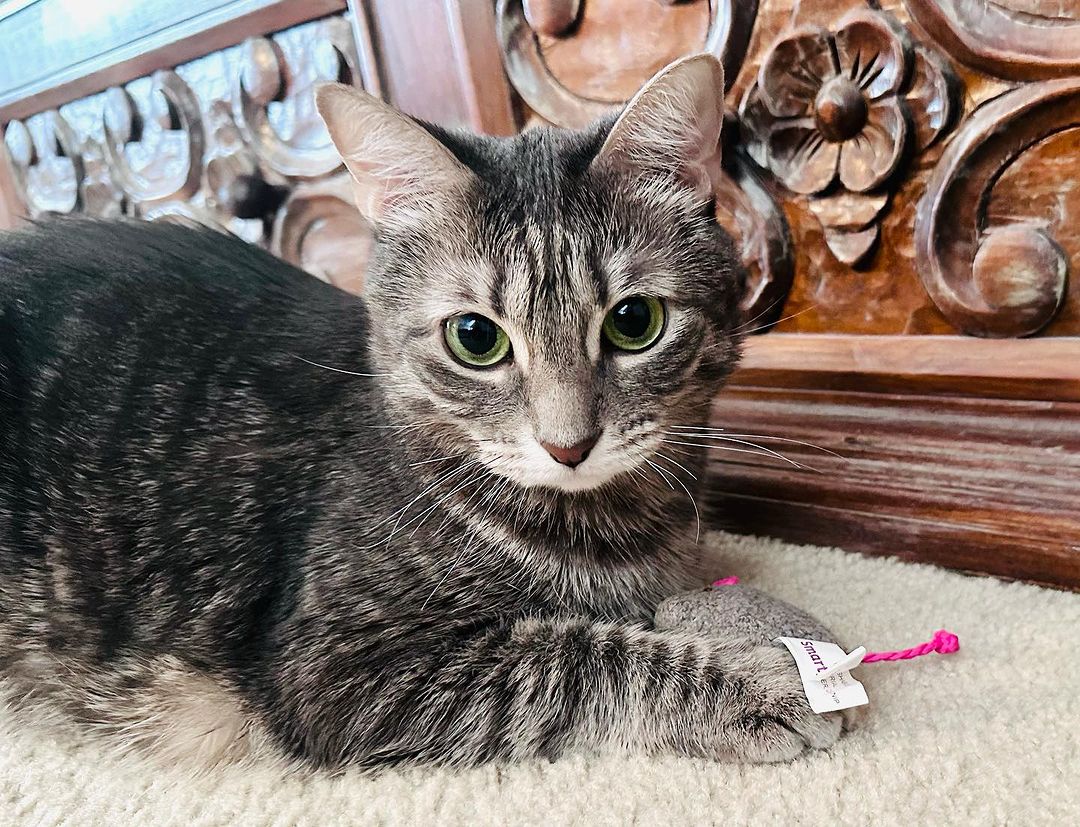
Cat Breeds that are Grey Tabby
The term “grey tabby” doesn’t refer to a specific breed of cat, but rather a color and pattern found on various breeds. The “tabby” part describes a common pattern on a cat’s coat characterized by stripes, spots, or swirling patterns, usually with an “M” shaped mark on the forehead. The “grey” part, as the name suggests, refers to the color of the coat.
Many breeds of cats can exhibit this pattern and color, including but not limited to:
- American Shorthair: Known for their classic silver tabby variant, they can also come in a grey tabby form.
- British Shorthair: They are popular for their solid blue-grey coats but can also be found with a grey tabby pattern.
- Maine Coon: Known for their diverse range of coat colors and patterns, it’s common to find a grey tabby pattern in this breed.
- Domestic Shorthair: This catch-all term for mixed-breed cats in the U.S. can certainly include grey tabbies, given the diverse genetic background of the population.
So, if you’re interested in a grey tabby cat, you’ll find this color and pattern in a variety of breeds, both pedigreed and mixed-breed. It’s important to consider the breed’s typical characteristics and care needs when selecting your new feline friend.
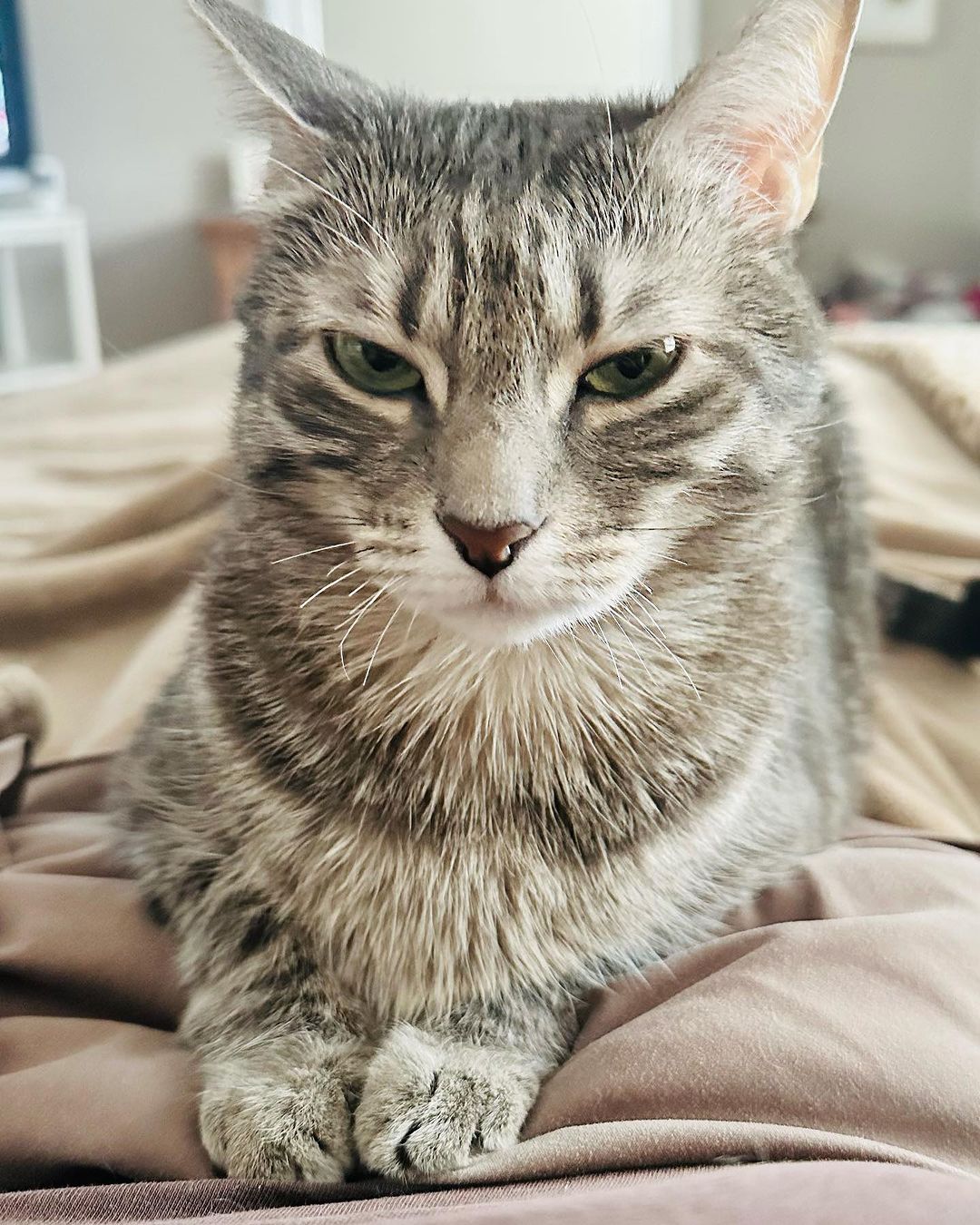
Wrapping Up
Grey tabby cats, with their charming appearance and captivating personalities, come in various breeds, from pedigreed to mixed.
Their enchanting presence enhances life, captivating hearts with their amiable and playful nature. From unique vocalizations to soothing purrs, these delightful creatures have a way of brightening your day.
Once you’ve experienced the joy of a grey tabby cat, you might just find yourself wanting more! There’s something undeniably irresistible about these feline friends.

